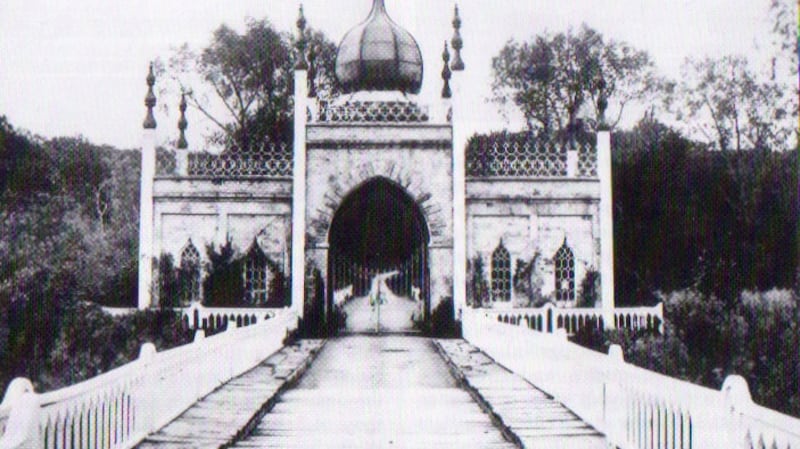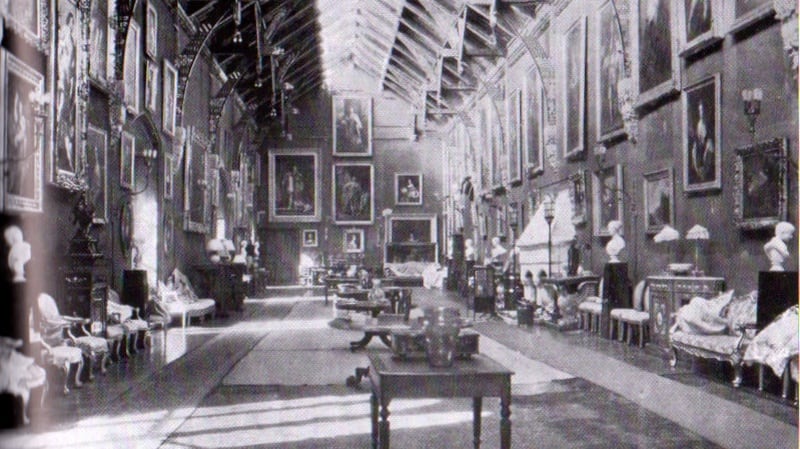The term "historical revisionism" or "secret history" is perhaps the most suitable category to describe a lavishly produced book about an historic mansion tucked away on the tip of the Hook peninsula in southwest Wexford. Loftus, The Hall of Dreams (Maison Noir Press, €125) by Helena B Scott adopts a new perspective and beguiling approach to the history of the house, said to be one of the most haunted in Ireland and known for its psychic disturbances.
Based on a Gothic story supported by historical facts, Scott’s text marries appealingly with Steve Meyler’s striking photographs of Loftus, its demesne and surroundings to create a substantial landscape-style book printed on silk paper. A mysterious and alluring landscape, the peninsula has attracted invaders from monks to Vikings and from Normans to Knights Templar. Previously known as Redmond Hall, its name was changed to Loftus Hall in 1666 following the Cromwellian conquest. Down the years it has masqueraded under many guises and in the 20th century became a convent and later hotel.
Through the use of tarot cards, each representing a specific subject, the author attempts to solve a mystery from the past – a paranormal experience which disturbed her in the hall and which she likens to a crime scene investigation. Containing a wealth of detail, this is not a crime novel nor a traditional textbook, and although some sections read like fiction, no parts are made up. The intriguing story, which embraces ley lines, geomancy and freemasonry, has many surprises and makes history come alive in a distinctive way. The book is best perused during the long winter nights curled up by the fireside when the reader should expect the unexpected.
0 of 3

A completely different approach to the built heritage is taken by Kimmitt Dean, who for 50 years has been gathering information about Ireland's gate lodges. His third volume in the series, The Gate Lodges of Munster: a gazetteer, (Wordwell, €30) represents an exhaustive study of the history and architecture of 2,775 of these quirky buildings divided by county. The gate lodge was the prelude to the big house, a symbol of the power, status and wealth of the owner to impress passersby and neighbours.
Half of the lodges have been demolished, deserted or boarded up, sad reminders of halcyon days but a considerable number of fanciful and ostentatious styles survive. Many are characterful, such as Fota at Carrigtohill in Cork which is lovingly maintained, as well as the exquisite lodge at Muckross in Killarney. The decoratively thatched roof of Deenagh Lodge, also in Killarney, is now frequented by tourists in its new role as a tearoom. One of the most extravagant is Dromana at Villierstown in Co Waterford where the gate lodge, built in the Hindu-Gothic style, is better known than the mansion and comes with copper onion domes modelled on the Royal Pavilion in Brighton.
Dip into this book and you will go on dipping. Written in a brisk staccato style, it features the expressive lingua franca of architecture. You will learn about decorative fascias and entablatured breakfronts, carved bargeboards, ornamental quatrefoil toes, mouth-organ fanlights and a raft of plinths, friezes and cornices. The author has been on his perambulations again and the final volume of his life-long immersion into this huge enterprise will feature Connacht in 2019.

One of Ireland's best-known castles at Kilkenny, occupying a commanding position over the river Nore, has been home to the powerful Butler family for more than six centuries and is a place where history lies deep. The Chief Butlers of Ireland and the House of Ormond (Irish Academic Press, €50) edited by John Kirwan, is an illustrated genealogical guide with a comprehensive record of the lineage of the Chief Butlers, dukes, marquesses and earls of Ormond and their families.
An illuminating 40-page essay by archaeologist Ben Murtagh outlines the complex history, architecture and archaeology of the castle with details on alterations, renovations and remodelling. Since 1969, it has been in State care and is now a major visitor attraction.
Antiquities of Rural Ireland (Wordwell, €25) by Muiris Ó Súilleabháin, Liam Downey and Dara Downey, sheds light on Ireland's agricultural and rural past focusing on monuments sometimes overlooked. Divided into seven sections, the book ranges from farming and food-processing, settlement and historical routes, to turf-harvesting, salt-making and kelp-production.
Coastal features explored take in a selection of “old reliables” including Martello towers, coastguard stations, lighthouses and promontory forts. The final section looks at ritual and ceremony covering rock art, wedge tombs, ogham stones, holy wells and the absorbing story of cillíní, children’s burial grounds which occur in a diverse range of landscape settings. Illustrated throughout with maps, aerial photographs, colour images and sketches, this is an instructive handbook to help identify fixtures in the landscape.
Paul Clements is a contributor to the newly published Fodor’s Essential Ireland, 2019. His email address is: clementsrp@googlemail.com






















